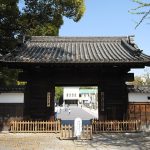
An Unlikely Origin
Located in the heart of Atsuta Ward, Shirotori Garden (白鳥庭園) is a fascinating blend of natural beauty and cultural heritage. Covering 3.7 hectares, this tranquil spot originated from a former lumberyard initially designated to become a swan park. The site was eventually transformed into this breathtaking garden for the World Design Expo 1989. Following an extensive seven-year renovation, Shirotori Garden opened its gates to the public in 1991.
A Symbolic Landscape
This meticulously designed garden encapsulates the scenic countryside surrounding Nagoya. One of its intriguing features is a mound meant to symbolize Mount Ontake. However, the centerpiece is undeniably its pond, a poetic reflection of the Kiso River. The landscape, aptly titled “The Story of Water,” mimics the topography of the Chubu district, allowing visitors to explore eight unique scenic vistas.
Culture Comes Alive
Shirotori Garden is not merely a sight for sore eyes; it’s also a vibrant hub for cultural activities. The garden offers a window into traditional Japanese culture, from tea ceremonies and kimono parties to moon viewings and art exhibits. One of its standout elements is the Seiutei—a tea house where you can immerse yourself in a traditional Japanese tea ceremony.
Inclusive and Accessible
The garden takes inclusivity to heart, featuring wheelchair-friendly pathways that make it accessible to all. Operating hours are from 9:00 a.m. to 4:30 p.m., with closures on Mondays and the third Wednesday of each month. Entry is priced at 300 yen for adults, while children up to junior high can enter for free. If planning multiple visits, consider purchasing the yearly pass for 1,200 yen.
Getting There
Access to this hidden gem is a breeze. Hop on the Subway Meijo Line and alight at Atsuta Jingu Nishi station. From there, it’s just a quick 10-minute walk to paradise.
Final Thoughts
Shirotori Garden is more than just a park—it’s a nexus where natural beauty and cultural richness intersect. With its easy accessibility, calming atmosphere, and many cultural offerings, it is a cherished retreat for those looking to relax and explore the traditional facets of Japanese culture in Nagoya.
Nagono, CC BY-SA 3.0, via Wikimedia Commons



